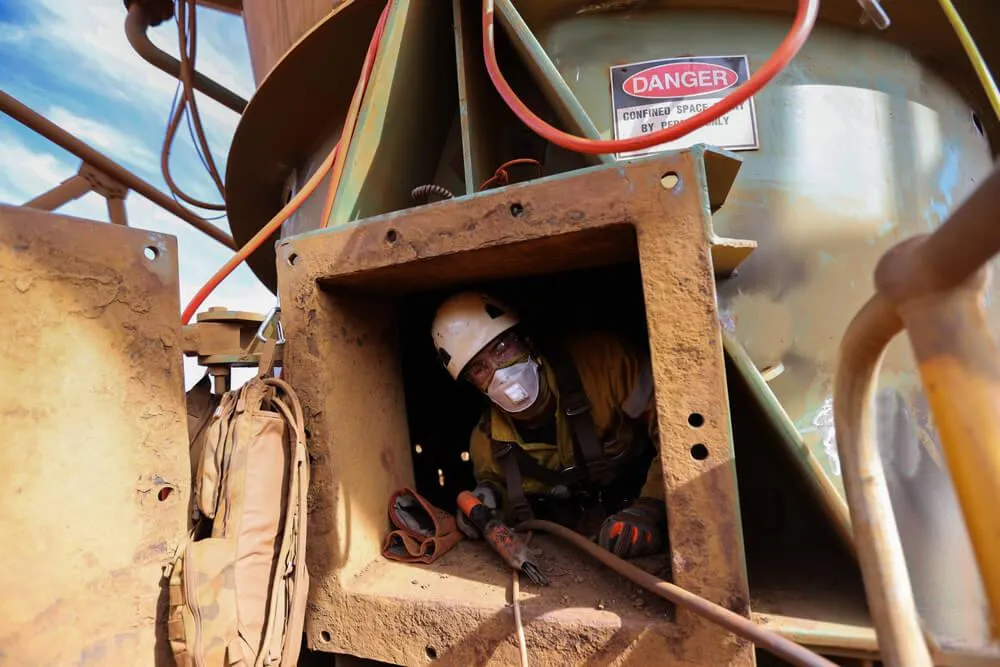
How are confined spaces and permit-required confined spaces different?
Confined spaces are not uncommon in many work sites. An enclosed space is an area that has limited means of entry and that is not intended for continued occupation. Maintenance tunnels, silos and tanks are all examples of a confined space. Confined spaces are often dangerous places to work, with hazards that workers in other spaces don’t face. However, some confined spaces present extra hazards that aren’t present in all confined spaces. These are what is referred to as a permit-required confined space.
According to OSHA standards, any workers who attempt to enter such a space must possess an entry permit. This lets the confined space attendant know that the worker has undergone the proper training for the hazards that may be present in the space. Workers who have not been properly trained risk injuring themselves and others.
What is a permit-required confined space?
There are a number of factors that make a permit-required confined space different from a normal confined space. While both workspaces should be accessed only by trained workers, the hazards that may be present in a permit-required confined space require additional training. In a permit-required confined space, one or more of the following hazards may be present:
Hazardous atmosphere — This includes hazardous gases such as hydrogen sulfide that cause illness when ingested. The presence of flammable gases in the atmosphere also poses a great risk to worker safety.
Material capable of engulfing an entrant — Water, gravel or grain are some examples of materials in which a worker may become engulfed. Without quick rescue, this can lead to asphyxiation and death.
Risk of entrapment or asphyxiation — Confined spaces where a worker can become trapped between walls or fall down a sloped area that tapers to a smaller cross-section pose a great risk of injury. Workers can become trapped in such spaces, and asphyxiation is one of the risks that can occur.
In a permit-required confined space, these hazards might be present, but they are considered to be “controlled.” In a normal confined space, none of these or other major hazards are present at all. Any hazard that poses an immediate threat to life and health can classify a confined space as permit required.
How can I prepare my employees for working in a permit-required confined space?
Confined space safety training is just one of the many workplace safety programs offered by Basin Safety. Our training program will prepare your workers for the hazards of working within a confined space. This includes training for confined space attendants and supervisors.
The program covers hands-on skills needed during confined space work. This includes personal protective equipment, non-entry rescue, atmospheric testing, chemical profiles, risk analysis and rescue equipment familiarization. Our safety material is built to help you prepare your team for any potential hazards they may face. They will also be well prepared in the event of an emergency.
Our skilled teams are also available for field services your confined workspace may need, such as testing for hazards such as hydrogen sulfide.
Contact Basin Safety today for more information.
Archives
Categories
Benzene Testing
Bloodborne Pathogens
Breathing Air Systems
Certification Process
Confined Space Attendants
Confined Spaces
Construction Equipment Operators
Electrical
Environmental Compliance
Excavation and Trenching
Fire Extinguisher Training
Forklift Operator
Hazcom Workplace Safety
HAZWOPER
Hearing Protection Training
Heavy Equipment
Hydrogen Sulfide
Lone Worker
Lone Worker Solutions App
Monitoring
Oil and Gas
Oil Drilling
Online Training Confined Spaces
Permit-required
PPE
Radiation Safety
Rescue Equipment
Rescue Team
Safety Consultants
Safety Devices
Safety Tracking
Safety Training
Site Inspections
Training 1
Training 2
Training 3
Training 4
Training 5
Uncategorized
Virtual Access to Safety Data
Waste Haulers
Confined Space Rescue
Mental Health
VISIT US
202 48th Ave SW, Williston, ND 58801
2740 Sims St. Suite B Dickinson, ND 58601
(701) 572-8140

BASIN SAFETY CONSULTING CORPORATION
Basin Safety believes in shared excellence. We are accountable to our core values:
● Pioneering Excellence Everyday
● Supporting each other to put customers first
● Asking the right questions, to ensure the greatest results.
Basin Safety Consulting © 2025. All rights reserved.
Powered By Upleveled Strategies

BASIN SAFETY CONSULTING CORPORATION
Basin Safety believes in shared excellence. We are accountable to our core values:
● Pioneering Excellence Everyday
● Supporting each other to put customers first
● Asking the right questions, to ensure the greatest results.
VISIT US
202 48th Ave SW, Williston, ND 58801
2740 Sims St. Suite B Dickinson, ND 58601
(701) 572-8140
Basin Safety Consulting © 2025. All rights reserved.
Powered By Upleveled Strategies
